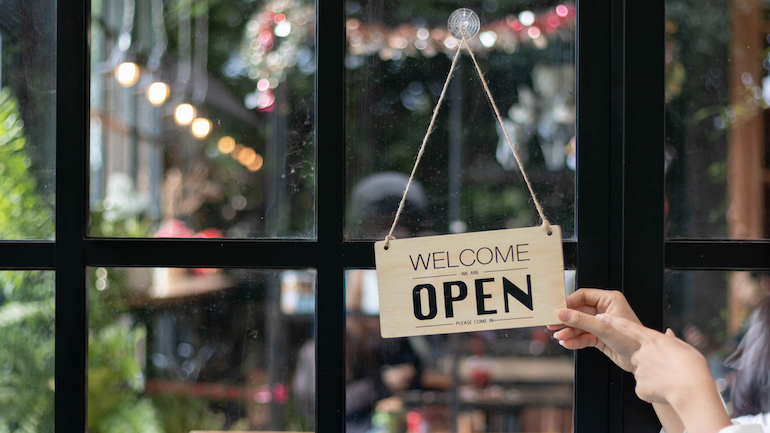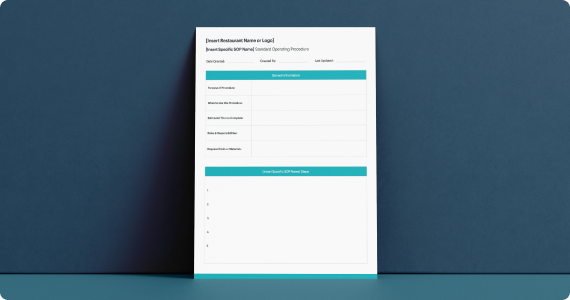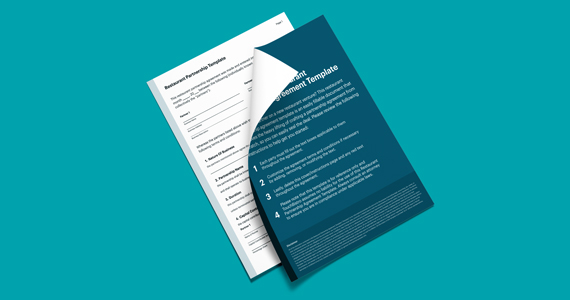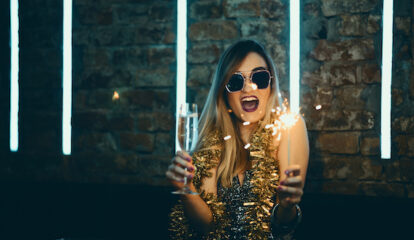As a restaurateur and entrepreneur, opening a restaurant can be full of multiple ups and downs, especially if it’s your first time. However, once you have figured out the ins and outs of operating your first restaurant – and it becomes a huge success – it’s only natural to think about expanding your restaurant concept. Although opening a second restaurant can be an exciting endeavor, it comes with its own set of challenges that even seasoned restaurant owners will need to navigate.
According to TimeOut, “61% of independently operated restaurants fail within three years of opening.” Therefore, it’s important to set yourself and your business up for success in the long-run by learning everything you need to know about opening a second restaurant for your business.
To help you jump-start the process, we’ve created a guide to help you that will cover the following:
- When you should open a new restaurant location
- 6 essential steps for opening a second restaurant location

When Should You Open a New Restaurant Location?
There can be many reasons causing you to steer in the direction of a business expansion and opening a second location. So, how do you know when you’re ready to take that next step and open another location?
You’re Making a Profit or Have Consistent Cash Flow
It can be challenging to open a second location if you’re struggling to financially upkeep your current one. Ultimately, you want to ensure you have enough cash on hand to avoid risking your entire business in the process of opening a new location.
Knowing that your original location is making a profit, or at least a consistent cash flow over time, can be a key indication that you’re ready to tackle opening another location. With plenty of cash to spare, you’ll not be able to manage your finances day-to-day, but also avoid long-term financial trouble like accumulating debt.

Use this template to align your team on key proesses and streamline daily operations.
You’ve Streamlined Current Operations
If you’ve streamlined your current operations, it can set your second restaurant location up for success, since your success can easily be replicated. This includes a well-documented system for communication, hiring, training, financial management, and more. And to replicate the prior success of your original location, it’s important to ensure your staff are on the same page of how the new location should operate. This means sharing appropriate and accurate documentation to ease the process, like a great restaurant employee training manual.
There’s a Strong Demand for What You Offer
If you’re seeing demand for what your restaurant has to offer, that’s great news! Whether this is evident from growing sales or positive feedback directly from your customers inquiring about when you’ll open a new location, these are all positive signs that your restaurant is heading in the right direction and that it may be a good time to expand, given your strong customer base.
For example, if you consistently have a line out the door of your restaurant, or your dining space is filled with people who don’t even live close by, it can be a great indication that an expansion may be worth considering. Conduct your own research to learn who your customer base is and if there is a large enough market to support your new location.
You’re Ready for a New Challenge
As an entrepreneur, you’re likely more inclined to take risks and seek the next challenge. Operating one restaurant location for years can feel repetitive over time, especially if you have hit peak growth and established a consistent customer base. Therefore, opening a second location for your small business can help you continue to grow your empire and inspire you creatively.

Use this fillable template to help seal the deal on your restaurant partnerships.
Opening a Second Restaurant Location: 6 Essential Steps
If the above resonates with you and you feel ready to expand your business, the next step is to take your idea of opening a second restaurant and put it into action. So, how exactly do you do that? Here are six essential steps you can take.

1. Create a Business Plan
First and foremost, you must secure investor funding for your second restaurant. And to kick-start that process, a strong restaurant business plan can be a valuable tool to outline your plan to potential investors. A business plan serves as a detailed plan and vision for your second location, along with how it will operate. Some other components to include in this document are your business objectives, market analysis, and financial projections.
A well-thought out business plan also prevents you from opening a second location for your business blindly and falling victim to careless mistakes. Cornell Hospitality’s research on the topic emphasizes the importance of having a business plan, and that having a clear vision and mission is one of the elements of restaurant success. Therefore, whether you need to update your current business plan or start from scratch, investing the time and effort in creating one can be worthwhile.
2. Evaluate the Market
Once you finish creating your business plan, you’re likely very excited to move forward with leasing or purchasing a second location. However, before you get ahead of yourself, you need to decide where your next location should be, as choosing a location for your venue is just as important the second time around.
There are many factors to consider when evaluating the market to determine which location will be best for your business. Invest your time in evaluating the potential market itself and do a deep dive in learning about the demographics, target customers, and competition surrounding your potential location. Your customers can be your strongest source of initial feedback in the research process, so use this opportunity to talk to them, especially those who you know are traveling far to visit your current location.
3. Secure Funding
Are you able to fund opening a second restaurant location yourself from the consistent cash flow from your current location? If the answer is yes, fantastic! If not, no need to worry, as you have options, such as pitching your restaurant to investors, accepting generous offerings from friends and family, or asking banks for a loan.
After creating your business plan, you should know what your financial projections are to share with potential investors. This includes any upfront costs from purchasing or leasing the property, any renovations to the space from the get-go, labor costs to operate the business, and much more. And, if possible, bring in investors that can add value to your operations beyond funding – your restaurant will be better for it in the long run.

Use this fillable template to help seal the deal on your restaurant partnerships.
4. Find Your Second Location
Now that you have spent time conducting thorough market research and have your funding secured, you can now venture out to find the right space for your second restaurant. So what exactly should you look for to find the perfect location?
Consider factors such as foot and drive-by traffic in the area, as well as parking at the new location. This is especially important if you are a full service spot that is mainly dine-in, which requires convenient parking for customers who wish to take their time at your restaurant.
Besides evaluating the outside components, you must figure out whether the interior space fits your needs operationally (our Restaurant Location Checklist can help with that). For instance, if you operate a pizza restaurant that requires large equipment, such as a wood-fire pizza oven, it’s worth checking if it’ll fit in the space. And if it doesn’t, you can look into how much it’ll cost to move forward with renovations if it’s a space you love.
5. Outfit Your Venue with the Right Technology
Once you find the perfect location, you’ll need to equip it with the right technology, such as a point of sale (POS) system and other technology for restaurants that can help keep operations running smoothly.
A modern POS system, more specifically a cloud-based system with multi-location management features, can be beneficial for managing a chain restaurant and, in this case, opening a second location. For example, you and your restaurant staff can view reporting data or make changes to your menu using a centralized platform, promoting consistency and ease.
More than one location also requires more inventory, which is something to consider when you are opening a second location for your small business. So, how can you manage all that new inventory that comes with opening a 2nd business location? An inventory and back office solution, like TouchBistro Profit Management Powered by MarginEdge, can be an essential tool that helps you pool resources between venues – saving you time and cutting back on waste.
And to help engage and retain your guests across all your locations, effective customer relationship management solutions, like loyalty, are a must. For instance, having a digital loyalty program allows you to offer a consistent guest experience across both of your restaurant locations, so customers can visit one or the other and still enjoy the same perks.
Overall, managing a multi-unit restaurant concept with the right technology means plenty of operational support to help you run day-to-day operations at more than one location successfully.

Use this template to align your team on key proesses and streamline daily operations.
6. Hire a New Team
The right location and technology can certainly help, but to successfully run your new location, you also have to hire the right people.
Start by hiring a general manager – someone who can keep restaurant operations running smoothly for you, since it’s impossible for you to physically be present in two places at once. Hiring a general manager early on is especially helpful, since one of their main responsibilities is to hire and onboard new employees for your new location. If necessary and your new location is accessible for your current staff, you can also relocate staff in the meantime to help train new team members.
When hiring a new team, it’s important to base who you hire off your new staffing needs, and not replicate the process if your two locations are vastly different. For instance, if your first location is a full service restaurant (FSR) and your new location is a quick service restaurant (QSR), the hiring and training process will not be identical, as you’re building an entirely different team. If your new location is in a different state or province, it’s also important to consider differences in minimum wage rates, overtime laws, and payroll deductions. However, accounting and payroll software can help manage this for you, so you have one less thing to worry about.
Now that you’re equipped with the ins and outs of opening a second location for your business, you’re better set up for success. To help you maintain consistency in your processes across both locations from day one, be sure to use our restaurant SOP template. Best of luck in growing your restaurant empire!
Download our free inventory template
Sign up for our free weekly TouchBistro Newsletter







